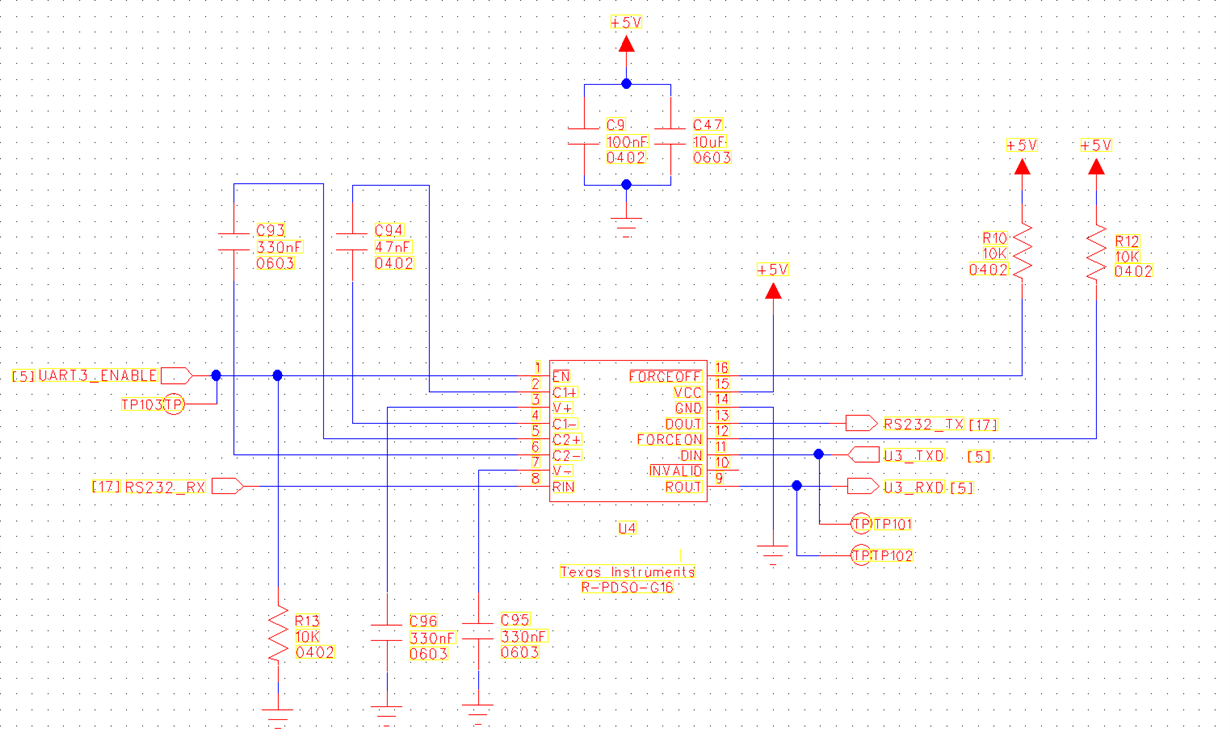I am using the MAX3221 to interface between a computer and a microcontroller.
I have the:
FORCEON pin low
/FORCEOFF pin high
/EN pin low
I have a valid level on the receiver input and verified that the /VALID pin is high, indicating a valid level. Also, the transmitter from the microcontroller is working properly, data sent from the microcontroller is making it into my hyperterminal window. The problem is that data coming from the computer isn't making it through the receiver of the MAX3221. The receiver input signal looks fine, going between -6.5V and +6.5V, but the receiver output is not doing anything, it seems to be in the high-impedance state or, maybe, shutdown state.I wouldn't think it is in shutdown because the transmitter is still functioning.
Any ideas why the receiver isn't working?


